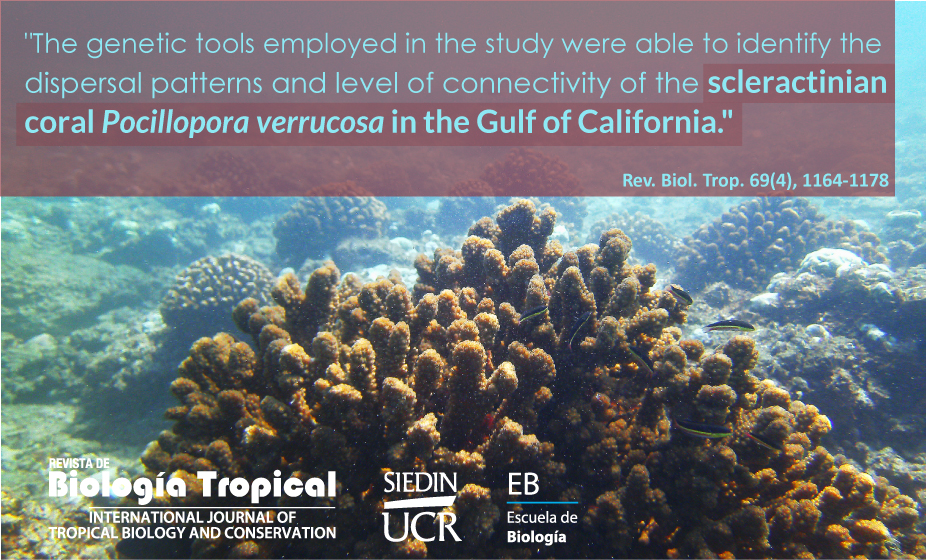Abstract
Introduction: Estimates of contemporary connectivity of the broadcast spawning coral Pocillopora verrucosa between multi-use marine protected areas (MUMPAs) are required to assess MUMPA effectiveness and their ability to enhance resilience against disturbances. Objective: To determine the genetic structure and connectivity patterns between P. verrucosa demes inside the Gulf of California and evaluate the role and effectiveness of established MUMPAS in their protection and resilience. Methods: We assessed P. verrucosa connectivity along its peninsular range (∼350 km), including five locations and three MUMPAs in the Gulf of California using six microsatellite genetic markers. Results: Population structure was significant (FST = 0.108***) when demes included clonal replicates; however, when these clones were removed from the analysis, the sexual individuals comprised a metapopulation panmixia (FST = 0.0007 NS). To further
understand connectivity patterns, an assignment test was carried out which identified ten recent between-deme migrants with a mean dispersal distance of 116.6 km (± 80.5 SE). No long-distance dispersal was detected. These results highlight the ecological importance of the Bahía de La Paz region, including Archipiélago de Espíritu Santo MUMPA. This region, located at the center of the species peninsular range, exports larva to downstream sink demes such as the Loreto (northwardly) and Cabo Pulmo (southwardly) MUMPAs. Of importance, inter-MUMPA spacing was larger than the mean larval dispersal by ~56 km, suggesting thar the designation of intermediate ‘no-take’ zones would enhance short-distance connectivity. Conclusion: This study contributes as a baseline for policymakers and authorities to provide robust strategies for coral ecosystem protection and suggest that protection efforts must be increased towards peninsular intermediate reefs to promote metapopulation resilience from natural and anthropogenic factors.
##plugins.facebook.comentarios##

This work is licensed under a Creative Commons Attribution 4.0 International License.
Copyright (c) 2021 Revista de Biología Tropical







